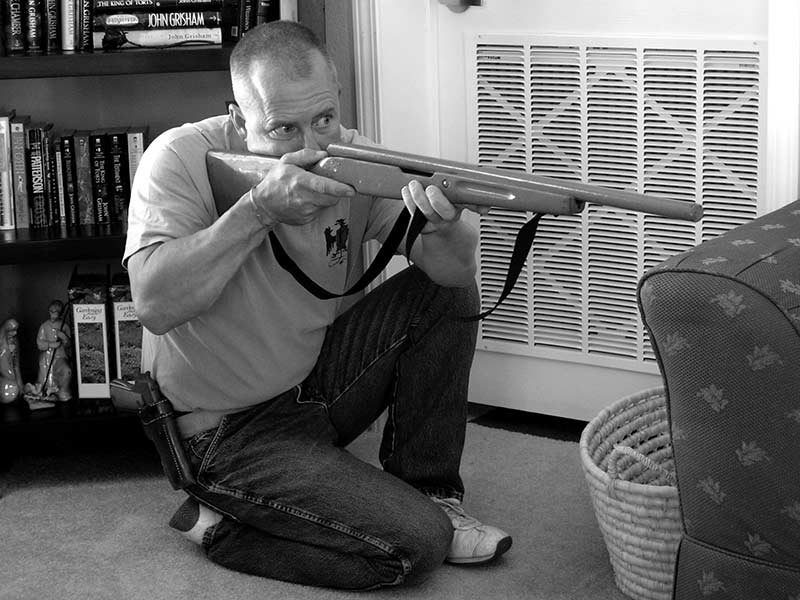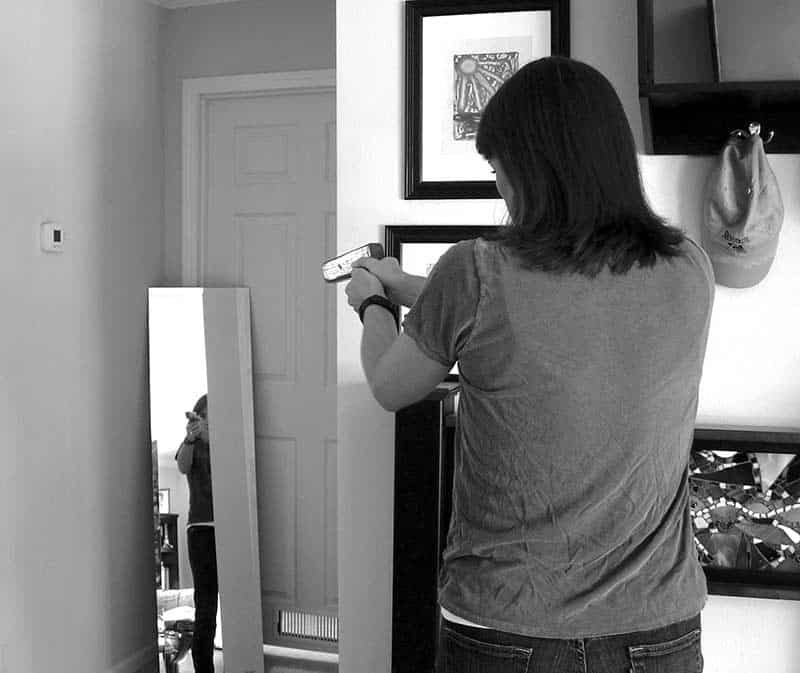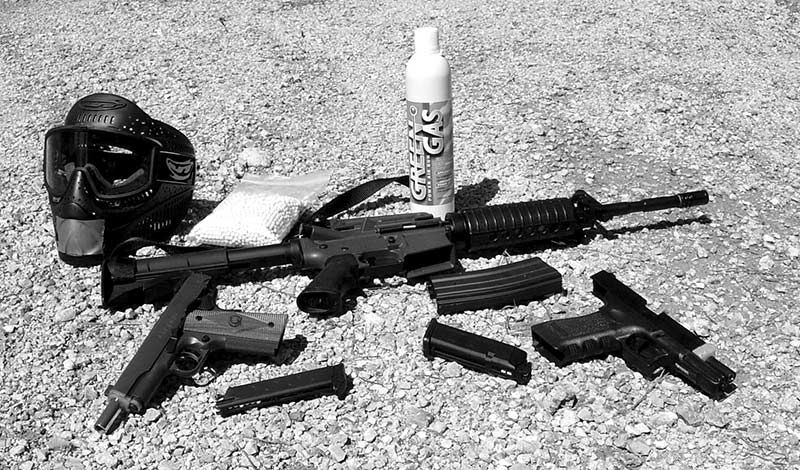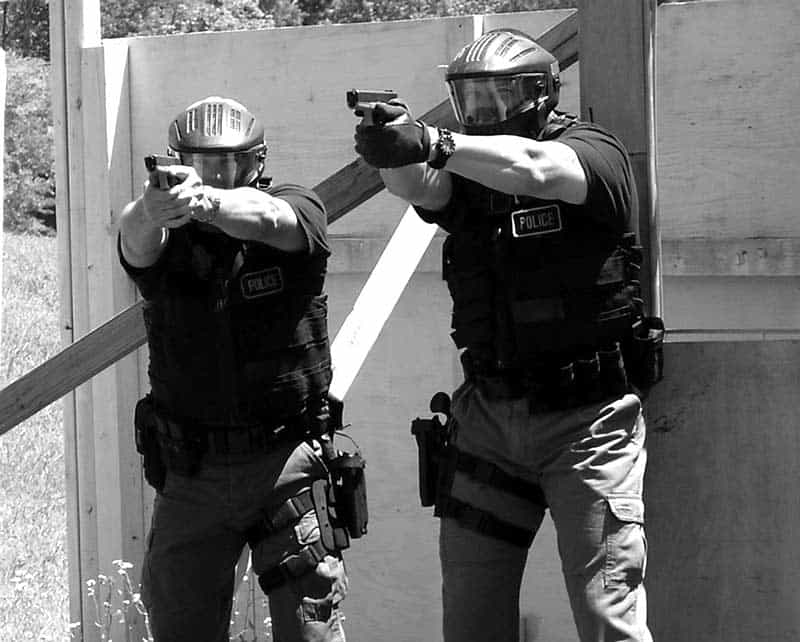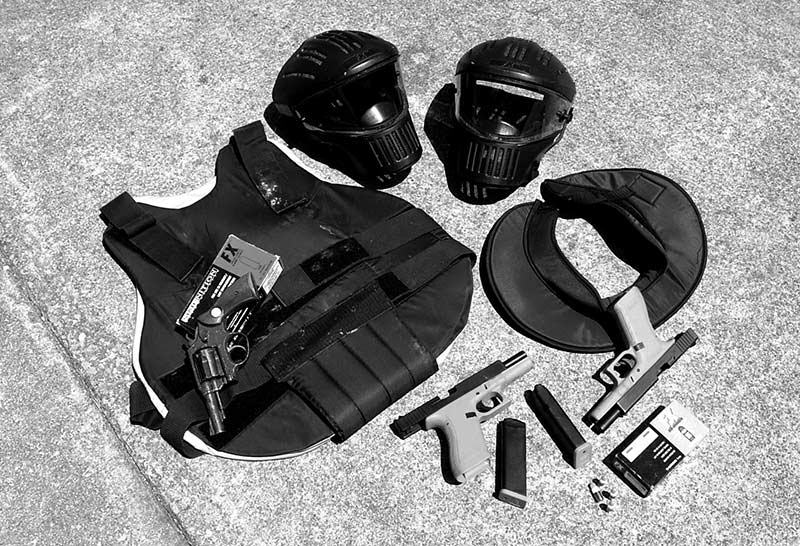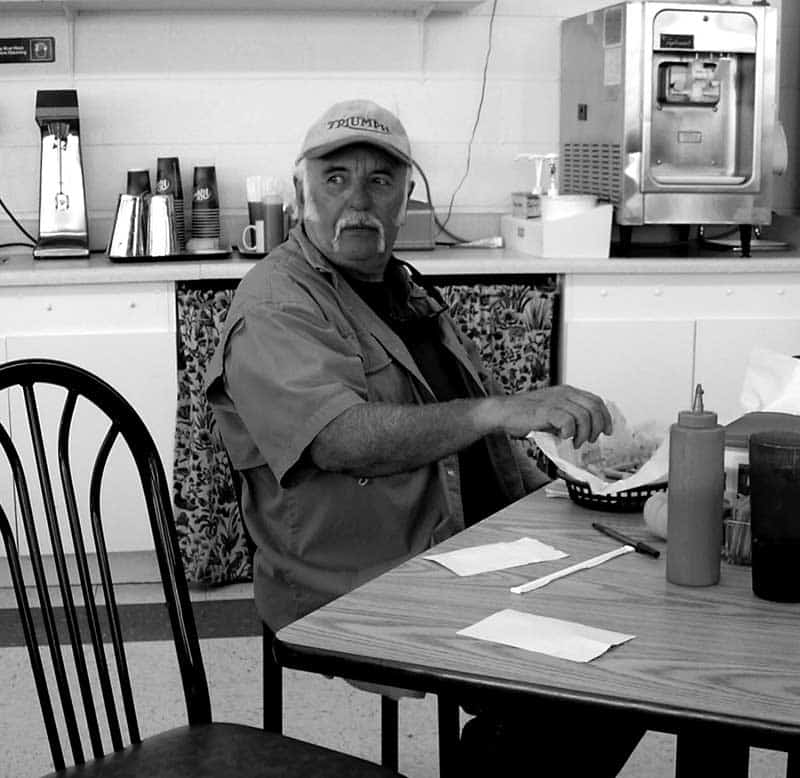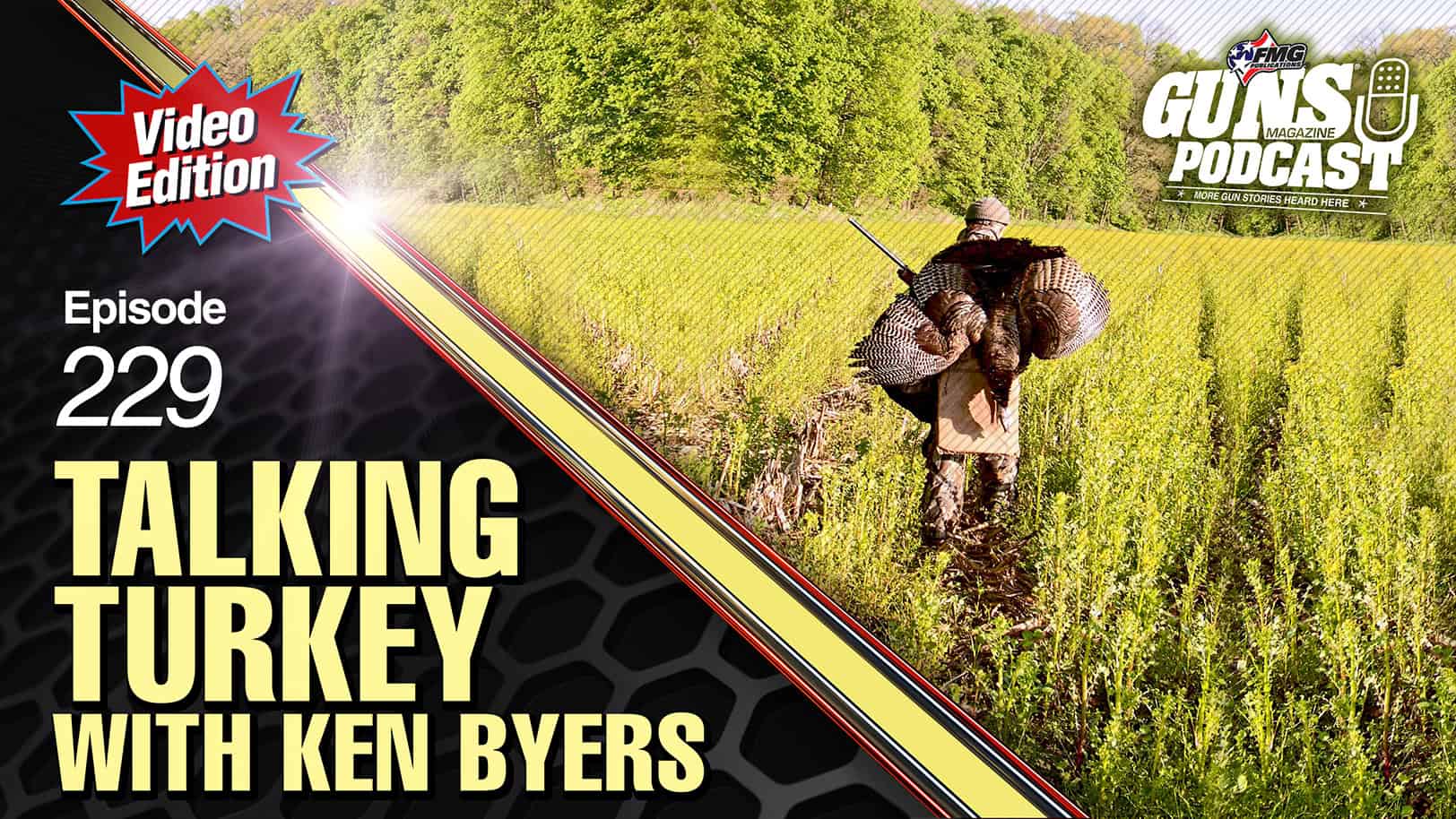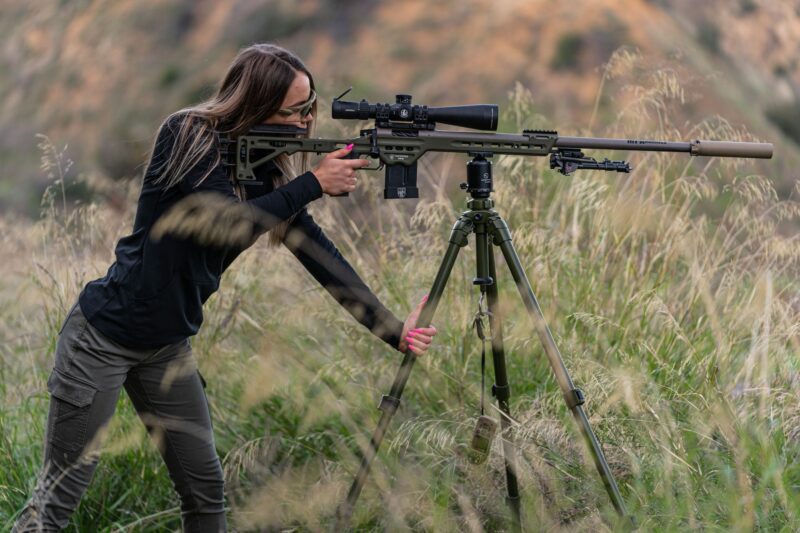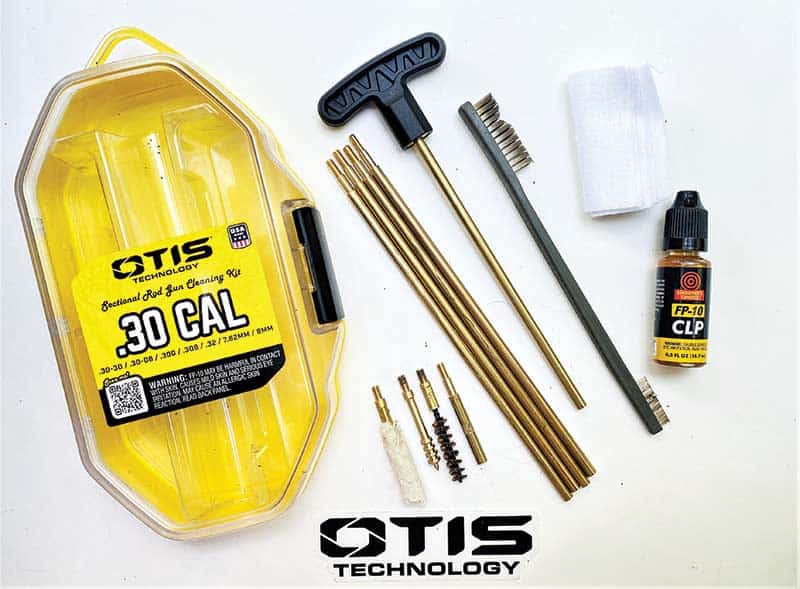Dry-Practice
Everyday Practice For Everyday People
To fight effectively with firearms requires training – receiving instruction on fighting techniques and combative theory – and practice, the actual learning and improvement of those skills. During a firearms class, you’ll perform numerous repetitions of the material being presented, but the bulk of the learning process begins after class. Applying these skills under the stress of actual combat requires learning at the subconscious level, which is only obtained with thousands of repetitions. Whether you have a firearm for self-defense or carry a weapon professionally, the best way to develop and hone your fighting skills is with dry-practice.
You can dry-practice with an actual weapon, using dummy ammo or snap-caps to drill on the fundamentals of marksmanship or manipulations. You can practice with plastic dummy weapons or airsoft weapons, realistic replicas that fire plastic pellets are valuable training tools when used properly.
In the absence of other training tools, the simple repetition of working on smooth movement, the geometry of slicing around corners, or using cover is highly effective. Then there is “mental-imagery” practice, a valuable and underrated practice technique where you vividly imagine yourself performing complex tasks under duress. The point is there is no excuse for not practicing your fighting skills everyday in some form or fashion.
The Fight
A typical fight (if such a thing exists) includes the following: target acquisition/identification, movement, communication, using cover, shooting accurately, manipulation of your weapon, plus a variety of other skills. The actual combative portion of the fight usually only lasts a few seconds. (Although there are always exceptions to this!) To perform the tasks required in such a compressed time frame, most of these actions must be executed using the subconscious
mind. The conscious mind can only focus on one thing at a time. The subconscious can process millions of bits of information, and is responsible for the majority of your actions. The subconscious performs simple tasks. Imagine how many times you’ve tied your shoes. Now, think about the complex actions of driving a car. The majority of these tasks are also performed by the subconscious.
How does this apply to fighting? During the fight your weapon runs empty. The conscious mind says, “reload,” then the subconscious takes over to perform the reload. You don’t have time to stop and think how to reload. The subconscious just does it. The conscious mind is then free to focus on assessing the situation and ending the fight through escape and
evasion, the physical act of combat, or a combination of several strategies. To fight effectively the conscious and subconscious must function as one. The only way to achieve this ability is through repetition.

Plastic replicas of actual weapons allow you to work from the holster and
practice your presentation. The wood weapons are homemade practice tools
that can easily be fabricated with a minimal amount of cost. The AR and
1911 are realistic dummy military training tools. I would hesitate to use these
for practice since they could easily be confused for real weapons.
Perfect Practice
Most people think of practice taking place on the range, but I’m betting very few of you have the time, money, or facilities for the number of live-fire repetitions necessary to learn these skills. I don’t, and I have a range in my backyard! Considering all these factors, the most economical and best way to learn fighting skills is through dry-practice, which occurs off the range. And (this is the cool part) your daily life contains countless opportunities to dry-practice a variety of combative skills.
Dry-fire practice is performed with your actual firearm, but using dummy ammo or “snap-caps” instead of live ammunition. You set up various weapon conditions, such as action locked open on an empty magazine or a malfunction, and then reload or clear the malfunction. This isn’t exciting — there’s no bang, satisfying recoil, or compliments from your friends about your accuracy. But this is the very best way to learn these fundamental and critical skills. Firearms run empty and malfunction, even when your life depends on them. To operate the weapon without having to think about it requires repetition.
During dry-fire practice you’re working with a real weapon so ALL safety rules apply. Keep the muzzle pointing in a safe direction. If there is a mistake, you don’t want to damage anything you can’t afford to pay for. And trust me on this, when you’re done dry-fire practicing, YOU’RE DONE. Most negligent discharges connected with dry-fire practice occur when someone decides to do just one more presentation and dry fire — after they’ve reloaded with live ammo!
An alternative to using actual weapons are the plastic red or blue guns. (They are called red or blue guns because these are the colors they usually come in.) These dummy weapons allow you to practice a variety of skills without the worries of using a real weapon. You can practice almost anywhere. You can work on presenting your pistol, or mounting your long-gun in your living room, moving to cover (behind the fridge) while maintaining a sight picture on the threat (the tall lamp in the corner). Even though these plastic guns have non-movable parts, you can mentally and physically go through the motions of reloading or clearing malfunctions, working the controls of the weapon with the proper hands/fingers.
Dummy weapons are also great tools for learning to clear corners and use cover. Get a tall mirror, the kind that goes on the back of a bathroom door, set it opposite a corner, and then clear around that corner (Clint Smith taught me this one). With the mirror you see exactly what the bad guy sees as you come around the corner. Your eyes, muzzle, and weapon sights should be the first things that come into view, exposing the least amount of your body as possible. As I work around a corner I’m looking for toes, knees, elbows, shadows, or any other target indicator. I want to see part of them before they see me. Then I can withdraw, hold, or proceed around the corner.
I treat dummy weapons just like real ones. I don’t do anything with a fake weapon that I wouldn’t do with a live one. Don’t point the muzzle at anything you’re not willing to destroy — especially your own body — and keep your finger off the trigger unless your sights are on the target, and, I would add, your eyes are on the sights. Applying the safety
rules consistently prevents you from developing bad habits that will lead to trouble with a live weapon.
Airsoft
Airsoft Weapons (AsW) are reproductions of actual weapons that fire plastic pellets, and fairly accurately to boot. (I call them weapons because they fire projectiles capable of injuring someone.) You can get pistols, down to specific models such as a Wilson Combat CQB 1911, AR and AK carbines and bolt-action rifles, even revolvers and shotguns. These
new fangled BB guns are a great training aid — when used properly. You can practice the fundamentals of accuracy, moving and shooting, using cover, reloading, and other fighting skills.
With a couple of AsWs and some friends you can run force-on-force scenarios, where you are “fighting” against living, moving, and thinking threats. Just be careful these sessions don’t break down into free-for-all shootouts. Scenarios should be strictly scripted as to what part the “bad” guys are playing. The good guy should have with a well-defined goal, with an actual beginning and end to the situation. You should talk to a lot more “people” than you shoot. Keep the engagement realistic and disciplined. Facing six armed and violent threats isn’t going to be your typical confrontation. Playing gunfighter can do more harm than good. There’s plenty of data out there on actual confrontations, so base your scenarios off real world confrontations.
With force-on-force training you are ramping up the pace, and safety is extremely important. Everyone wears protective gear. As the stress rises, so does the adrenaline-dump. So clear everyone of knives, backup weapons, or anything that might be grabbed reactively during the heat of battle. I recommend avoiding all physical contact. When people get excited and go hands on they tend to use more force than they realize. Unless you have protective suits it’s very easy to injure someone. One of the best references on force-on-force training, Training at the Speed of Life, by Kenneth R. Murray should be read by anyone considering this type of practice.
You can also practice without any weapon at all. The principles of tactical movement, working down hallways, slicing around corners and clearing doorways can be done pretending you’re holding a weapon. When you make a trip to the fridge, move tactically, working corners and using cover with your imaginary weapon. Even better, do it backwards, imagining yourself creating distance from a threat, using a thumb as a front sight to focus on. You don’t even have to pretend you’re holding a weapon. At the office, take the stairs instead of the elevator, thinking about the geometry of clearing all those corners when you’ve got open areas above and below you.
Balance
Your daily activities provide you with opportunity to develop a variety of other fighting skills. Physical balance is a great example. To fight effectively you have to have mental and physical balance. Most people don’t realize they can improve their physical balance through practice. Everyone has the ability in them, some of us just have to work on it
more than others.
While brushing your teeth, getting dressed or washing dishes, stand on one leg or the other, working on maintaining your balance. When you’re picking up dirty clothes off the floor do it tactically, keeping your head and eyes up, “weapon” extended, and squatting or kneeling down like you’re retrieving a magazine or flashlight off the ground. By being creative you can improve your fighting skills with almost everything you do.
Mental imagery practice, using your imagination to learn, is a tool you can use anywhere. I call it “brainpractice.” This is such a valuable tool because the part of your mind that stores memories can’t distinguish between events we realistically imagine, and events that have actually occurred. Sit down, close your eyes, and vividly imagine drawing your pistol smoothly, firing off accurate rounds, running empty reloads or clearing malfunctions while moving to cover. This repetition for your brain is very effective.
Imagine you’re in a parking lot walking to your car. In your mind feel the weight of your groceries. You hear car doors slamming, people talking, the semi-truck blowing its horn on the frontage road. Smell the diesel fuel in the air competing with the aroma of food coming from the restaurant in the next lot. Suddenly, you’re attacked! You issue verbal commands for them to stop as you back up and draw your pistol. The attacker keeps coming. Focusing on the front sight, you press the trigger. Feel the recoil — follow through by reacquiring the front sight and resetting the trigger. Fire again. The threat drops to the ground. You continue to create distance, get to cover and scan for other threats. Then, imagine the chaos that follows as the police arrive, you identify yourself, responding to their commands to drop your weapon and get on the ground.
Program Your Brain
Mental imagery practice programs our brain to fight, without having to get this experience on the job — a bad place to be learning combative skills. This practice cultivates a readiness you won’t get from shooting targets on the firing range. Again, keep it realistic. See all this from your eye’s view, not as you might see yourself on a movie-screen, flying through the air, weapon blazing, downing a dozen bad guys. The more realistic and vivid the practice, the easier it is for the mind to relate to when it’s needed in reality. And always imagine yourself winning the fight. Defeat can be programmed just as easily as victory.
Mental practice can be performed anywhere and any time. While eating at the local restaurant imagine someone enters the building and begins shooting. How would you react? Where is the closest protective cover, usable concealment or the exit?
When you pull up to the quick-mart take a second to look inside the store and see if everything looks O.K. Scan the parking lot before getting out of the car. Inside the store, visually monitor the parking lot. Play the what-if game.
I’m not advocating paranoia. But you do need to be aware, which is the first stage of preparation. If something does happen, even if it’s not exactly the environment or situation you’ve imagined, you’re still accustomed to thinking tactically, which leads to action. Instead of thinking, “oh my gosh, I can’t believe this!” you’re thinking, “I knew this could happen, and I’m ready.”
“Throughout your life advance daily,” Hagakure, The Book of the Samurai advises, “becoming more skillful than yesterday, more skillful than today. This is never-ending.” By being motivated and creative, practice can be part of your daily life. Everything you do contains an opportunity to develop, maintain, and improve your tactical skills. When it comes to life or death confrontations, there is no such thing as too prepared.
Subscribe To American Handgunnerhttps://gunsmagazine.com/wp-admin/post-new.php#
